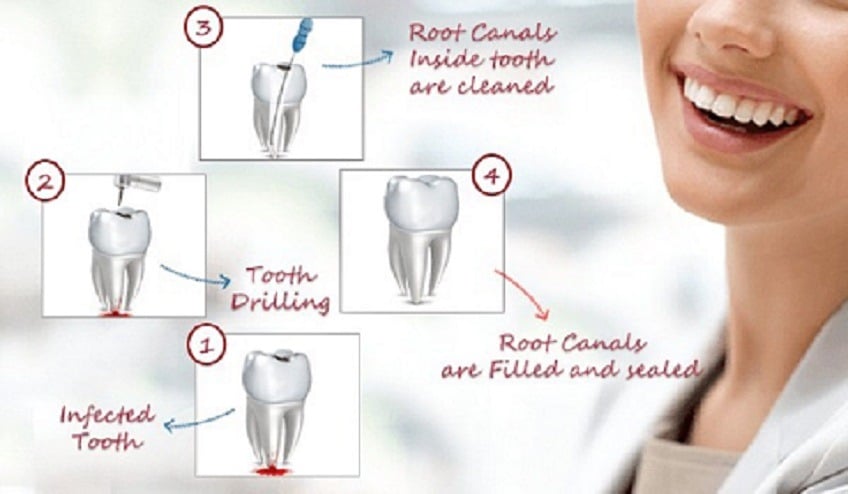Root canal is a treatment used to fix and protect a tooth that is badly damaged or is infected. During a root canal treatment, the nerve and pulp are expunged and the inside of the tooth is cleaned and sealed. Without intervention, the tissue surrounding the tooth will develop infection and abscesses may form. The most typical causes affecting the pulp are a cracked tooth, a deep cavity, repeated dental treatment to the tooth or trauma to it. The term “root canal” comes from cleaning of the canals inside the tooth’s root.
Decades ago, root canal treatments were agonizing and hurtful. With dental advances and local anaesthesia, most people have little, if any, pain with a root canal now a days. .
Preparation
In a Root canal treatment, a series of X-rays of the affected tooth are taken. This helps in building a clear picture of the root canal and determining the extent of any impairment in the tooth.
Root canal treatment is usually carried out under local anaesthesia, which numbs the specific area of the mouth.
In some cases where the tooth has died and is no longer sensitive, it may not be necessary to use a local anaesthesia.
Eliminating the pulp
A rubber sheet (dam) is applied around the tooth to ensure it is dry during treatment. The dam also prevents ingesting or breathing in any chemicals that are used.
The tooth is then opened through the crown – the flat part at the top – to reach the soft tissue at the centre of the tooth (pulp). Any infected pulp that remains is then removed.
If there is a dental abscess, it is drained at the same time.
Cleaning and filling the root canal
After the pulp has been removed, the root canal is cleaned and enlarged so that it can be easily filled. The root canal is usually extremely narrow, which makes it laborious to fill.
A set of small files are used to broaden the canals and make them a regular shape so that they can be filled.
Different set of teeth have different roots. The more roots a tooth has, the longer the treatment will take to finish up.
If the treatment requires to be carried out over several sittings, a small amount of medication is applied in the cleaned canal in order to kill any remaining bacteria. The tooth is then be sealed using a temporary filling.
Antibiotics may be given, if there are symptoms of infection, such as a raised temperature or swelling, which will help manage and prevent further infection.
Sealing and fixing the tooth
Finally, the temporary filling and medication within the tooth is removed and the root canal filling is inserted. This seals the tooth and checks reinfection.
Root-filled teeth are more prone to breakage than healthy unrestored teeth, so a crown may be placed on the tooth to protect it.
Sometimes, a root-filled tooth may darken, especially if it has died due to injury like a knock to the tooth. This can then be treated for discolouration, such as whitening the tooth using chemicals.

